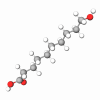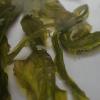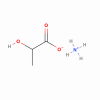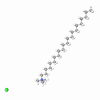Acetamidoethyl PG-Trimonium Chloride is a quaternized substantive humectant with excellent moisture-binding properties and low molecular weight. It is a tack-free material that possesses a soft smooth feel. It is a colorless to clear pale straw-colored liquid with a slight amino-note odor.
A series of equilibrium moisture isotherms have been performed which demonstrate that the quaternization does not reduce the moisture ability of this ingredient to bind moisture. In fact, it appears that Acetamidoethyl PG-Trimonium Chloride possesses almost double the moisture-binding properties of the parent compound, Acetamide MEA. The following data shows a humectant that displays properties that are parallel, but superior to conventional polyol humectants.
The skin and the hair are both composed of keratin (protein) which should be regarded as chiefly proteinaceous substrates with an excess of free negative charges at their physiological pH (around 5.5). This makes them highly receptive to cationic materials. Keratin contains more of the dicarboxylic amino acids (aspartic & glutamic acid), which will ionize and give the skin and hair free negative charges; than the basic amino acids.
Obviously, a cosmetic material that will form some type of “chemical bonding” to the skin and hair, will enable it to resist washoff and “wear” better under normal conditions. In recent years there has been a tremendous increase in the number of cationic cosmetic raw materials available which will have different effects on the skin and the hair. Cationics form the basis of cream rinse conditioners and have become widely used as conditioners in shampoos. Recently they have played a key part in the emulsifying systems of skin care products, where the use of these materials allows a completely different after-feel and wear properties compared to the conventional anionic or nonionic-based systems.Many classes of cosmetic compounds have been made cationic to enhance their substantivity and functionality. This includes emollients, emulsifiers, fatty materials, lanolin, polymeric materials, gums, and proteins. All these types of materials have been well accepted in cosmetic formulations due to their improved performance over the parent compounds. It is easy to come up with a long list of advantages, which include for example, resistance to rinsing, enhanced softening effects, improved anti-microbial properties, high levels of substantivity, etc. One important class of cosmetic materials which have not been modified in this way, are humectants.











